The Engagement Ring Debate: A Two-Ring Tradition?
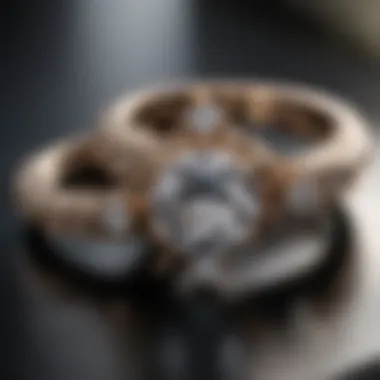
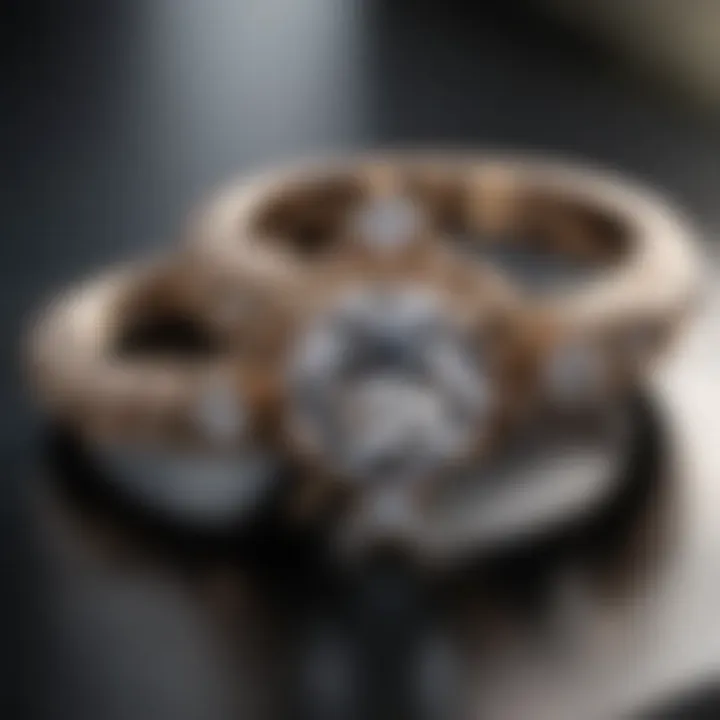
Intro
The question of whether both partners should receive an engagement ring touches on complexities that span across culture, gender norms, and economic considerations. As relationships evolve, so too does the symbolism surrounding engagement rings. Traditionally, engagement rings have been associated with women, often viewed as a commitment from men. However, this perspective is changing, prompting discussions on shared symbols of commitment for all partners involved.
This article will explore various perspectives on engagement rings, focusing on historical origins, cultural practices, and modern interpretations. Through careful analysis, it aims to inform readers of the varying opinions and practices regarding engagement rings for both genders, stressing the significance they hold in contemporary relationships.
Perspectives on Engagement Rings
Historical Context
Engagement rings have a rich history that dates back thousands of years. Initially, they served as tokens of ownership, where the ring signified that a woman belonged to a man. In many cultures, including Roman and Egyptian, rings made from metal were exchanged to symbolize a contract of marriage.
Cultural Variations
Different cultures practice varying traditions regarding engagement rings. In some cultures, it is customary for both partners to exchange rings, while in others, only one partner receives an engagement ring. For example, in Scandinavian countries, it is common for both partners to wear matching engagement rings, indicating mutual commitment.
"The significance and representation of the engagement ring often differ based on the cultural circumstances surrounding the relationship and society in general."
Modern Perspective
In contemporary society, the question of whether both partners deserve engagement rings has gained popularity. Many couples now seek a more egalitarian approach, valuing shared symbols that express their commitment. This shift reflects changing attitudes about partnership and the division of gender roles. Couples today actively engage in discussions regarding what representation of their love means to them, leading to a more personalized approach to engagement rings.
Ending
The engagement ring debate is layered with historical and cultural meaning, which continues to evolve. As society changes, so does the conversation around engagement rings and their significance. Whether both partners choose to exchange rings or not, what remains constant is the importance of the commitment they represent.
Prologue to Engagement Rings
Engagement rings carry significant meaning in society. They serve as a public declaration of love and commitment. Given their historical context and cultural relevance, understanding engagement rings is essential to grasp the ongoing debate about whether both partners should wear them. This inquiry highlights evolving social norms and personal choices in relationships today.
Understanding the Tradition
Traditionally, engagement rings have been given by one partner to another as a promise of marriage. This custom dates back centuries, with notable examples found in various cultures. The practice is sometimes traced to ancient Rome, where a ring signified ownership as much as affection. Many believe that the practice amplified during the Victorian era, emphasizing gemstones as symbols of devotion. In these historical contexts, the giver often bore most financial responsibility, reinforcing gender roles that persist in modern times.
Today, many couples are reevaluating these traditions. They question the need for a single partner to receive an engagement ring. Changing perceptions about gender and equality challenge the age-old practice. Individuals desire a more balanced approach in reflecting their shared commitment to one another. Therefore, understanding the tradition of engagement rings is crucial for appreciating their evolving significance.
The Symbolism of an Engagement Ring
An engagement ring symbolizes love, fidelity, and a lifelong promise. While its design and material may vary, the underlying meaning remains consistent across cultures. Gemstones, often diamonds, represent the strength and durability of love. The circular shape of a ring—alluding to eternity—further emphasizes this commitment.
Moreover, the choice of ring style can be a reflection of personal values. Some couples prefer ethical sourcing of materials, underlining their commitment not just to one another, but also to the planet. Others might choose designs that reflect their unique tastes and stories.
"An engagement ring is not just an accessory; it is a manifestation of a profound personal commitment."
Both in historical and modern contexts, the symbolism attached to engagement rings indicates their role as an important artifact in the journey of relationships. As social expectations shift, the significance of engagement rings will continue to evolve. Understanding this symbolism allows individuals to make more informed decisions about their respective commitments in an age marked by equality and choice.
The Historical Context
Understanding the historical context of engagement rings provides crucial insights into their evolution and relevance today. Historical factors can help us uncover the origins of the engagement ring tradition, shedding light on how societal norms and values have shaped its meaning. This exploration reveals the intricate interplay between cultural practices and personal sentiment. By dissecting the past, we can better appreciate why some believe both partners should receive an engagement ring, while others may still adhere to traditional views.
Engagement Rings Through the Ages
Engagement rings have a rich history that dates back to ancient times. Initially, they served as a symbol of ownership rather than love. The ancient Egyptians exchanged braided reeds, while the Romans popularized a gold ring given by the man to the woman to signify a binding promise.
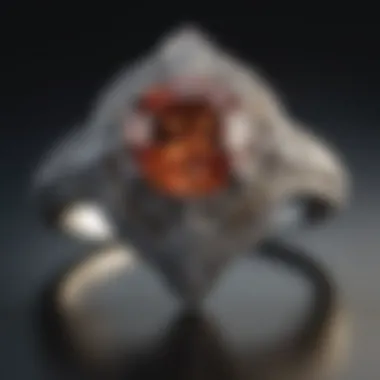
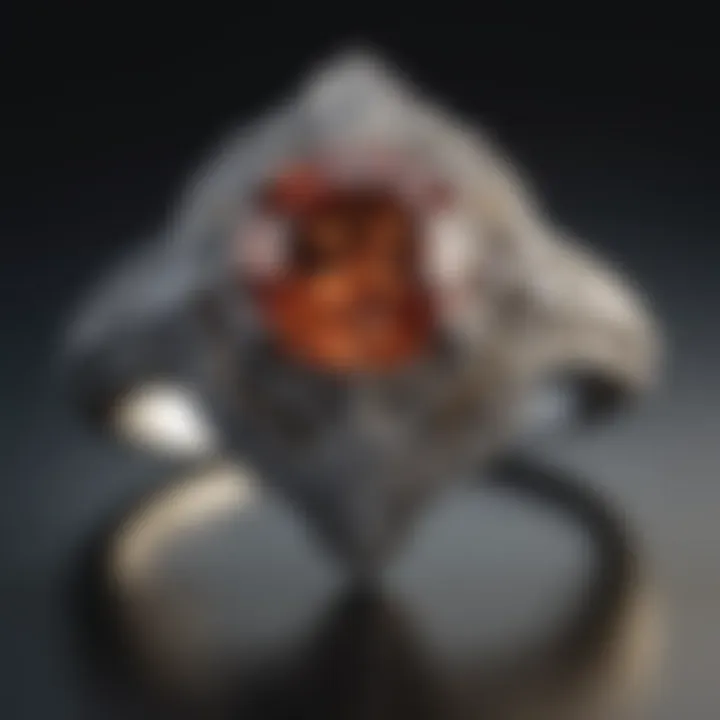
As centuries progressed, engagement rings evolved significantly. By the Middle Ages, they became more ornate, often featuring precious gemstones. Diamonds gained prominence in the 15th century due to the marriage between Archduke Maximilian of Austria and Mary of Burgundy. This ring marked the beginning of a trend where diamonds became synonymous with love and commitment.
From the Victorian era to the present day, engagement rings have continued to reflect changing societal values. The turn of the 20th century saw the introduction of specific styles, like the solitaire and three-stone rings, which remain prevalent. Each design tells a story and showcases the aesthetic preferences of its time, highlighting the historical context that shaped these choices.
Cultural Variations and Practices
The significance of engagement rings differs across cultures. In some societies, men wear engagement rings as well, while in others, it remains a practice exclusive to women. For instance, in Scandinavian countries, it is common for both partners to share matching rings. In contrast, traditional engagement practices in the United States predominantly feature the woman receiving an elaborate ring, often supported by significant financial expenditure.
Moreover, the choice of materials and designs varies widely. Certain cultures emphasize the use of specific stones or metals believed to hold particular meanings or powers. For example, in some Asian cultures, jade symbolizes good fortune in relationships, while in others, gold holds cultural significance, indicating prosperity.
This diversity of practices reflects differing values related to love, commitment, and financial considerations. By understanding these variations, we strengthen our grasp of why the question of equal rings for both partners elicits passionate debate.
"Engagement rings are not merely accessories; they are markers of historical and cultural narratives that evolve over time."
Engagement rings thus serve not just as personal tokens but also as artifacts of social customs and human connection that span across generations.
Current Trends in Engagement Rings
In recent years, the landscape of engagement rings has seen significant transformations. These changes reflect not only personal preferences but also evolving societal norms. Understanding current trends in engagement rings can provide insights into how couples view commitment and partnership today.
Rise of Non-Traditional Rings
The notion of what constitutes an engagement ring has broadened considerably. Many couples today are embracing non-traditional rings, which can include alternative gemstones such as sapphires, emeralds, or even lab-grown diamonds. The shift is towards defining individuality over conformity. A ring is no longer just a diamond on a gold band; it can represent personal stories and unique tastes.
By choosing non-traditional rings, couples often signify a break from conventional expectations. Custom designs that incorporate personal symbols or meaningful stones are gaining popularity. This trend aligns with increasing awareness about sustainable practices, as many are seeking ethically sourced materials.
Another aspect of this trend is the variation in ring styles. From vintage designs to minimalist aesthetics, the options are extensive. Men's rings, too, are experiencing a renaissance, with styles that reflect personal taste rather than adhering to standards set in the past.
Gender Norms and Expectations
Engagement rings have historically been gendered, with women traditionally receiving rings while men often do not. However, as gender norms evolve, so do the expectations surrounding engagement rings. Couples are now questioning why only one partner should wear a ring as a sign of commitment.
It is crucial to recognize how societal shifts impact these norms. Many couples are now opting for matching or complementary rings. The emphasis is on mutual representation of love and commitment, minimizing the historical imbalance.
Moreover, the dialogue around gender fluidity influences ring trends. Non-binary individuals are also part of the conversation, leading to a broader reinterpretation of engagement symbols. This evolution signifies a shift towards inclusivity, ensuring that all partners feel equally valued.
Adopting modern perspectives not only enhances the personal significance of each ring but also encourages open conversations within relationships. The idea of rings as symbols of commitment becomes a shared narrative, regardless of gender.
"In choosing rings together, couples express their shared values and commitment to one another in ways that resonate personally."
Overall, exploring current trends in engagement rings reveals shifts in both tradition and culture. As couples redefine what commitment means in their relationships, the engagement ring serves as a powerful representation of that journey.
Arguments for Both Partners Receiving Rings
The topic of whether both partners in a relationship should receive engagement rings is increasingly relevant in discussions about modern commitment. This consideration not only reflects changing societal norms but also emphasizes the notion of equality within partnerships. As contemporary relationships evolve, the expectation for one partner to bear the burden of a singular, expensive token of affection seems outdated. In this light, accepting engagement rings for both individuals can symbolize a more balanced approach to commitment.
Equality in Modern Relationships
The modern relationship landscape demands a reevaluation of traditional practices. Engagement is often seen as a union of equals, where both individuals contribute to the relationship holistically. By wearing matching or complementary rings, couples can visually signify their commitment to one another. This act fosters mutual respect and acknowledges that both partners are making a significant promise to each other.
Further, rings for both partners can eliminate the feeling of superiority that sometimes accompanies engagement traditions. Instead of one partner being placed on a pedestal, the shared acknowledgment of a relationship milestone can serve as a reminder of their equal footing. Each ring can also reflect individual styles or preferences, reinforcing that marriage is a partnership that honors both people's identities.
Mutual Symbol of Commitment

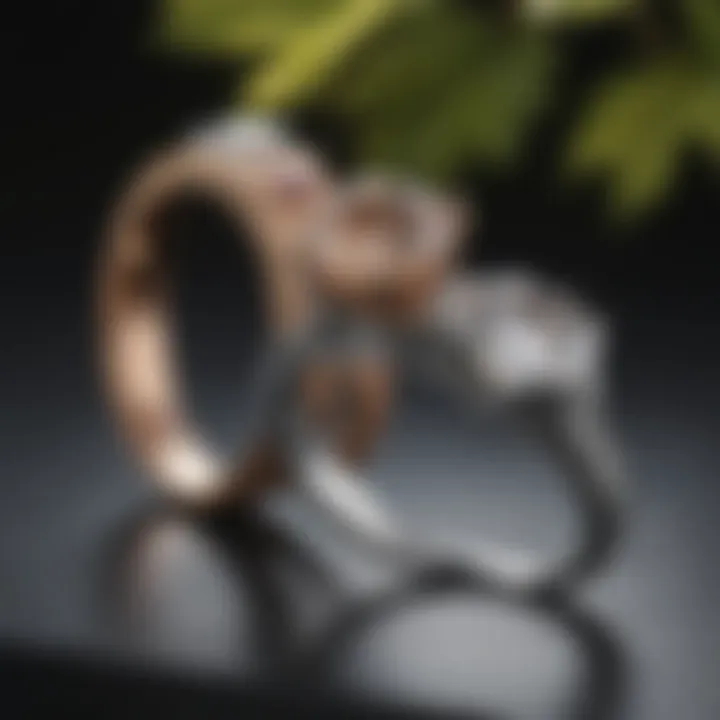
When both partners receive engagement rings, it creates a mutual symbol of commitment that can strengthen the bond between them. Each ring tells a story, representing not just the individual but the shared future they are embarking on together. This practice allows for a dual celebration of love and dedication.
In many ways, rings symbolize promises and intentions. They embody a public display of affection and commitment to shared goals and dreams. When couples choose to exchange rings, it showcases their desire to support one another while navigating life's ups and downs. As partners wear their rings, they carry a reminder of the vows they are making to each other, solidifying their bond.
"Receiving an engagement ring can be a beautiful way for couples to highlight their partnership and commitment, ensuring that both voices are valued in the journey ahead."
The growing trend of shared engagement rings suggests a shift toward more equitable relationship dynamics. This evolution might reflect broader societal changes regarding gender roles and expectations. Couples today often prioritize open communication and shared decision-making. In this context, both receiving rings becomes a fitting representation of their partnership.
In summary, the argument for both partners receiving engagement rings centers on equality and mutual commitment. It acknowledges that love is a partnership, one where both individuals matter equally. Each ring becomes a bond, symbolizing their connected journey into the future.
Arguments Against Both Partners Receiving Rings
When discussing engagement rings, the concept of both partners receiving a ring may seem appealing to many in today's egalitarian society. However, there are historical and practical reasons that argue against this notion. Understanding these arguments sheds light on the complexities of modern relationship symbols and helps couples make informed choices about their commitment.
Historical Precedents and Views
The tradition of wearing engagement rings is predominantly centered around women, with roots that date back centuries. Historically, engagement rings were meant as physical symbols of a man's commitment to a woman. These rings were often flamboyant and showcased the groom's financial abilities, serving as direct reflections of social status.
The disparity in ring-giving can be further understood through the lens of various cultures and their customs. In many societies, there's a delineation between the roles of genders during engagements. The man typically proposes with a ring, expecting the woman to wear it as a testament to her acceptance. Deviating from this tradition can invoke questions about commitment levels, which might not apply uniformly. Such established customs form the backbone of traditional engagements and highlight why the idea of reciprocal ring giving can face resistance.
Financial Considerations and Practicality
Financial implications are also significant when discussing the notion of both partners receiving rings. Engagement rings can represent a substantial investment, and many individuals feel pressure to purchase an extravagant piece to symbolize their commitment. This notion can lead to a financial burden, particularly among those who might be in the early stages of their careers or facing other expenses such as education or housing.
Crafting a budget for an engagement ring can be complex. For instance, a high-quality diamond ring can cost thousands of dollars. If both partners were to exchange rings, this expense could double, raising questions about financial priorities. Couples may prefer to allocate their resources to experiences rather than material tokens. This practical perspective often weighs heavily in decision-making, leading to the conclusion that one ring may suffice.
"The idea of both partners wearing engagement rings sparks debate, revealing deeper social and financial behaviors behind the symbols of commitment."
In summary, while the trend of mutual engagement rings is growing, historical traditions and financial realities pose compelling arguments against the practice. Couples should weigh personal values against societal expectations, making a choice that strengthens their unique bond. By understanding these facets, individuals can navigate the engagement process more effectively, ensuring their commitment has both sentimental and practical foundations.
Personal Preferences and Choices
In discussing engagement rings, the topic of personal preferences and choices plays a pivotal role. This section highlights the significance of understanding what rings mean to each individual, beyond traditional views. It emphasizes how the meaning attributed to an engagement ring can vary widely between partners. While one person might see it as a symbol of love and commitment, another may perceive it as a reflection of personal taste and identity. Discussing these preferences can also foster communication, an essential component in any relationship.
Individual Sentiment and Meaning
The sentiment attached to an engagement ring cannot be overstated. An engagement ring can represent unique stories, memories, and feelings. It is not merely a piece of jewelry; instead, it embodies a couple's journey together. Considerations involve the significance of materials, styles, and even the choice of gemstone. For some, a diamond ring holds a traditional allure, while others may prefer colored gemstones like sapphires or emeralds for their unique characteristics.
Moreover, understanding individual sentiment often means considering family heirlooms or custom designs that reflect personal stories. Each choice encapsulates emotional value, making it essential to respect these decisions. This mutual understanding can strengthen the bond within the relationship, enhancing the overall meaning of the engagement.
Customization and Personalization
Customization and personalization stand as crucial aspects when considering engagement rings. Many couples today prefer personalized rings that reflect their style, values, and shared experiences. Custom designs allow individuals to express their identity and commitment through unique craftsmanship.
There are various avenues for customization:
- Choosing specific gemstones or metals: Partners can select materials that resonate with their preferences and values. For instance, some may feel more aligned with ethically-sourced diamonds or lab-grown stones.
- Engravings and inscriptions: Adding a name, date, or a special phrase can infuse a deeper meaning.
- Design modifications: Changing settings or styles to create a one-of-a-kind piece can be an exciting process.
This personalization elevates the ring to a symbol of individuality and shared values. It symbolizes more than just engagement; it illustrates a journey defined by choices made together.
"An engagement ring is often an expression of who we are as individuals and as partners. Making it personal can deepen our connection."
Engagement rings might be traditional, but they do not have to be bound by conventional norms. The importance of reflecting personal choices cannot be ignored as relationships evolve. By emphasizing customization, couples can create engagement rings that resonate deeply with their identity.
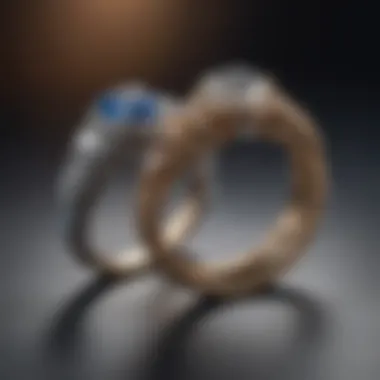
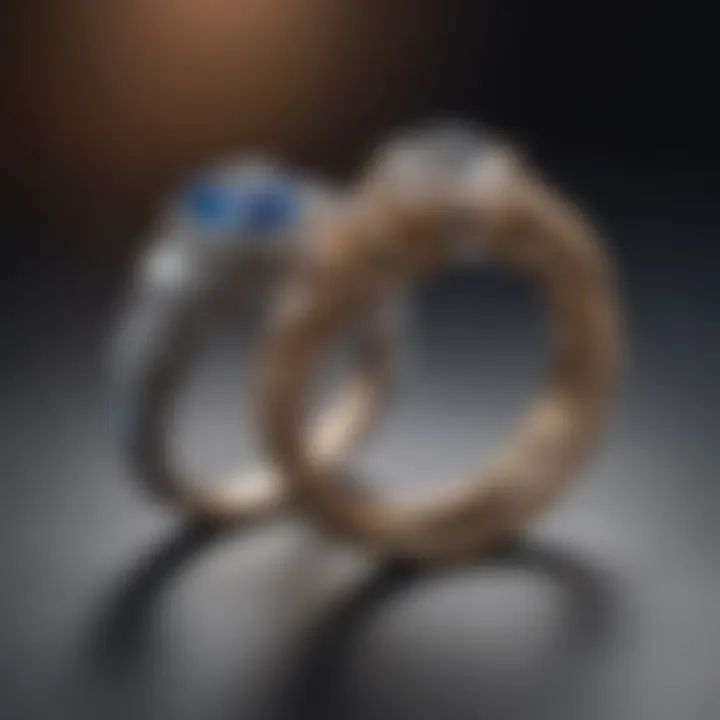
Alternative Symbols of Commitment
Engagement rings are often seen as conventional representation of love and commitment. However, there are many different ways to symbolize commitment that may resonate better with a couple's values or beliefs. Alternative symbols can be just as meaningful as the traditional ring. Their importance lies in their ability to reflect the uniqueness of relationships and emphasize personal choices.
Different Types of Pledging
Pledging does not have to be limited to rings. Various types exist that can signify a commitment between partners. Here are a few common methods:
- Promise Rings: Often given before an engagement, these rings can symbolize a commitment to a future together without formal betrothal.
- Matching Jewelry: Couples may choose to wear matching bracelets, necklaces, or other accessories that signify their bond.
- Tattoo Symbols: Some people ink symbols or initials on their bodies to symbolize their commitment. This is a personal choice and can be very significant.
- Personalized Items: Items such as watches, keychains, or custom-made pendants can serve as unique reminders of a shared pledge.
Each option has its own meaning and significance, allowing couples to choose what best represents their relationship.
Unique Symbols Beyond Rings
In addition to the types of pledging described above, unique symbols can emerge informally and vary by culture or personal preference. Here are examples that illustrate this:
- Shared Experiences: Engaging in meaningful activities together—like traveling, volunteering, or even cooking—can become symbols of commitment, standing for shared goals and dreams.
- Artwork: Couples might invest in a piece of art that reflects their relationship, creating a lasting memory.
- Family Heirlooms: Some people choose to use family items, such as necklaces passed down through generations, as tokens of commitment, linking the couple to their lineage and history.
- Nature-Based Symbols: Gifts like trees, plants, or stones can symbolize growth and strength, representing a commitment to nurturing the relationship over time.
"Commitment is not defined by a ring; it is about the meaning we derive from our choices together."
By embracing these alternative symbols, couples can highlight their individuality and the unique dynamics of their relationship, shifting the focus from traditional norms to personal significance.
Cultural Influences on Engagement Practices
The discussion surrounding engagement rings and their significance is deeply entwined with cultural influences. Such influences shape individual perceptions and societal expectations regarding who should receive a ring and what it represents. In varying cultures, the practice of giving engagement rings reflects broader customs around love, commitment, and the intertwining of lives. This exploration provides invaluable context for understanding the varied nuances of engagement practices today.
Global Perspectives on Engagement Rings
Engagement rings are not universally the same across the globe. In some cultures, specific gemstones and settings hold particular meanings. For instance, in many Western traditions, diamonds are the stone of choice when it comes to engagement rings, often symbolizing enduring love and strength. This preference can be traced back to marketing campaigns, notably by De Beers in the mid-20th century, which popularized the idea that a diamond ring is essential for engagement.
Conversely, countries such as India might favor more colorful stones or traditional designs. The inclusion of gold and diamond in Indian engagement rings often conveys wealth and status, serving not merely as symbols of love but also of family heritage. Similarly, in other cultures, forms of jewelry or different materials can express commitment without using traditional rings at all.
"Cultural practices surrounding engagement rings reveal deeper societal values that transcend mere adornment."
Additionally, the form engagement takes in other parts of the world hugely influences how rings are perceived. In some indigenous cultures, token items other than rings can symbolize engagement, emphasizing different customs that can be equally significant.
Impact of Popular Culture
Popular culture plays a pivotal role in shaping modern perceptions regarding engagement rings. Films and television shows greatly influence how couples view engagements. Iconic movies often feature elaborate proposals complete with sparkling rings, setting the expectation that such displays are the norm. Celebrities notably drive trends in engagement ring styles, often opting for unique and extravagant designs that inspire many couples.
Social media platforms also amplify these influences, showcasing countless engagement stories and custom designs. Instagram and Pinterest, for example, serve as hubs for sharing ideas and trends, where couples can easily browse for unique engagement rings or creative ways to propose. Such constant exposure creates pressure on individuals to conform to these depicted ideals.
The rise of non-traditional engagements is largely attributed to these influences. Couples are now more inclined to customize their rings to reflect personal styles, often moving away from the classic diamond. This shift demonstrates how pop culture allows for a varied expression of commitment beyond what has been traditionally upheld.
In summary, examining cultural influences on engagement practices sheds light on diverse perspectives and trends. By understanding how these influences intersect with modern relationships, one can appreciate the broader implications of engagement rings today.
Ending
The topic of whether both partners should receive engagement rings is complex and layered. This article highlights various perspectives and cultural practices surrounding engagement rings, acknowledging the evolution of this tradition. As societal norms shift, understanding the implications of these changes becomes crucial. By examining key elements such as individual sentiment, customization, and alternative symbols, couples can make more informed decisions that align with their values.
Reflecting on Modern Engagement
Modern engagement practices often reflect changing social norms. Many couples now approach engagement with an emphasis on equality. The discussion around who wears a ring symbolizes deeper feelings of partnership and shared commitment. As more individuals seek personal meaning in their engagements, the choice of whether one or both partners should wear rings becomes less about tradition and more about shared values. Furthermore, preferences for simplicity or uniqueness play a significant role. Couples today often prefer tailored rings or even other forms of pledges, such as bracelets or necklaces, adding personal narratives to their journeys.
Final Thoughts on Engagement Rings
"Rings are not just ornaments; they can be personalized expressions of love, distinct to each couple's journey."
It is about crafting a narrative that is true to one’s relationship, free from external pressures or outdated conventions.



